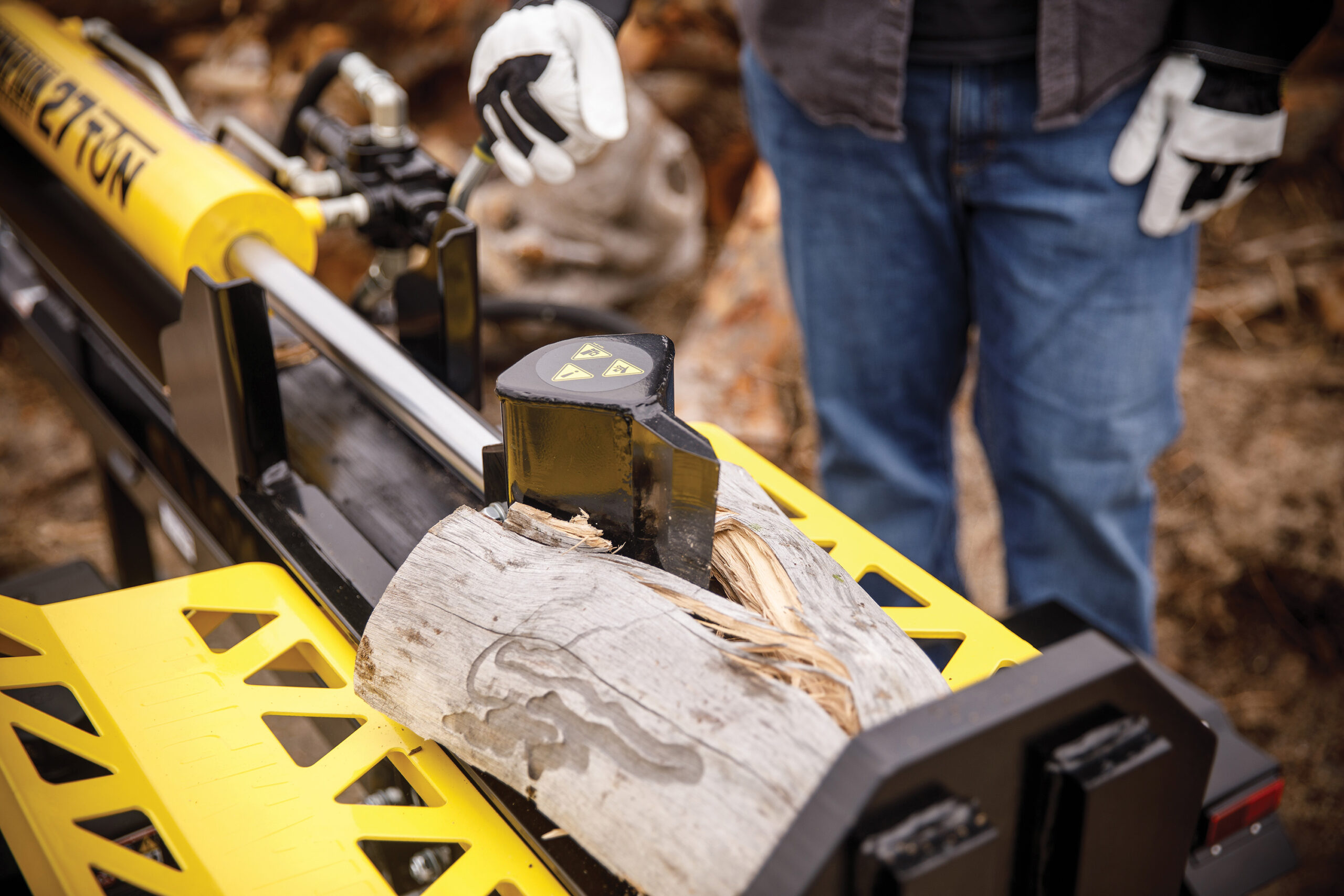Chilly Weather Prep: The No-Nonsense Guide to Log Splitters
Chilly Weather Prep: The No-Nonsense Guide to Log Splitters
Winter is on its way and unless you’re a polar bear or a penguin, you want to stay warm when it’s chilly. One tried and true way to stay warm is by building a fire, whether you want to gather around a fire pit, a campfire, or a fireplace.
To build a fire, you need firewood. Using an axe or a saw is one way to chop your firewood, but if you’re serious about stocking up on firewood and saving your back at the same time, a log splitter is the way to go. Once you start using it, you won’t know what you ever did without it.

Using a log splitter will save you time and energy so you can devote extra time to be productive in other areas or just unwind and relax with friends and family around that fire. You might also save money on your heating bill if you have a nice stockpile of firewood to heat up your home.
A log splitter is portable and easy to store and doesn’t make a big mess aside from a few wood chips, so you won’t have to devote hours before and after you use it.
When you’re ready to choose a log splitter, it might be tempting to get overwhelmed with all the choices, but there’s no need for that.
Log splitters are available in different tonnages. Tonnage is the amount of force a log splitter will exert as it splits a log. So, in order to know how much force you need, you need a general idea of how wide your wood is going to be in diameter, what kind of wood you’re going to be splitting, and whether that wood will be green or dry.
Wood Width
Consider the largest diameter of wood you plan to split and keep that in mind first. Think about the trees on your property. Even if you only split 6” thick pine logs now, is it possible that you might split 12” or even 18” thick logs in the future? If so, you might want to plan ahead and buy a splitter with more power now so you don’t end up with a tool that can’t do what you need it to later on.
Wood Type

You can check out this cool resource that illustrates the hardness of various wood species, but basically, the harder the wood, the more tonnage you’re going to need.
Green or Dry Wood
You also need to know if your wood will be green or dry. Green wood is freshly cut, has a high moisture content, and is a slightly green or yellow color. Dry wood is seasoned, has lost most of its moisture, and is a faded brown or gray color.
Green wood is difficult to split and takes more tonnage to split effectively. The moisture in the wood will evaporate with time making the wood more brittle and easier to split. If your plan involves splitting green wood, you will need to have a more powerful log splitter and exercise some patience.
How Much Do You Need?
One last thing to consider is the volume of wood you want to split. If you only want enough for a few cozy nights by the fire, you’ll need less tonnage than if you want to split enough wood to warm your home for the rest of the season.
Features
Now that you know what size log splitter to buy, what features should you look for?
Horizontal to Vertical
One awesome feature to consider is the ability to convert your log splitter from horizontal to vertical. If your log splitter is horizontal, you have to lift the log onto the splitter. But – if you’re dealing with an exceptionally large, heavy log, you might want to convert it to vertical so you don’t have to lift the log to place it on the machine. A vertical setup helps you avoid the struggle to lift a large, heavy log onto your log splitter.
Portability
Do you want to take your log splitter to go? If so, you need to make sure it’s portable and easily towable with DOT-approved wheels, a ball hitch coupler, and an extended tongue in case you want to tow it behind your ATV or UTV.
Storage Options
We get that you’re not going to want to store your log splitter in the living room, but in case your garage or shed is full and you need to store your log splitter outside, never fear. Protective covers are available that will shield your log splitter from the elements and keep it safe, clean, and dry so it’s ready to work when you are.